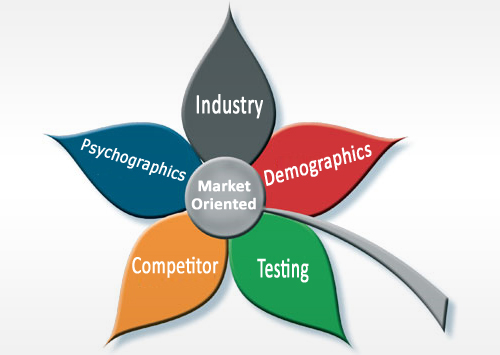In today’s hyper-competitive business landscape, standing out from the crowd is more crucial than ever. The rapid evolution of digital technologies and shifting consumer expectations demand that businesses not only keep pace but also innovate continually to maintain a competitive edge. Marketing, with its direct line to the consumer, plays a pivotal role in this endeavor. It’s not just about selling a product or service anymore; it’s about creating a memorable brand experience that resonates with consumers on a personal level.
For businesses seeking to elevate their market position in such a dynamic environment, implementing strategic marketing tips is essential. These strategies go beyond traditional approaches, integrating the latest in technology, consumer insights, and creative thinking to forge meaningful connections with customers.
-
Focus on Customer Experience
The cornerstone of any successful marketing strategy is an unwavering focus on customer experience. In today’s market, consumers have more choices than ever, and their expectations for brand interactions are at an all-time high. Businesses that prioritize and continuously enhance the customer experience at every touchpoint—from the first website visit to post-purchase support—set themselves apart in a crowded marketplace. It’s about creating an effortless, engaging, and enjoyable journey that not only meets but exceeds customer expectations.
Improving customer experience involves a deep understanding of customer needs, pain points, and preferences. By placing the customer experience at the heart of their marketing strategies, businesses can cultivate a loyal customer base.
-
Leveraging Omnichannel Marketing
In an era where consumers interact with brands across multiple platforms and devices, creating a cohesive brand experience is paramount. Omnichannel marketing automation stands out as a powerful strategy to achieve this goal. It represents the integration of marketing efforts across various channels—social media, email, SMS, web, and more—to deliver a seamless and personalized customer journey. By employing such automation, businesses can collect comprehensive data on customer interactions, preferences, and behaviors, enabling them to craft messages that are not only consistent across all platforms but also highly relevant to each customer.
This approach ensures that no matter how or where a customer chooses to engage with a brand, their experience is unified and reflective of their unique relationship with the brand. It’s about meeting customers where they are, with the right message, at the right time, enhancing engagement, and fostering loyalty. Automation can transform how businesses connect with their audiences, turning disparate interactions into a cohesive narrative that drives customer loyalty and business growth.
-
Invest in Content Marketing
Unlike traditional marketing tactics that may interrupt or seek to grab attention momentarily, content marketing aims to provide substance—to educate, entertain, or inspire—thereby building a relationship with the audience. By positioning the business as a thought leader or a trusted source of information, content marketing elevates the brand in the eyes of consumers.
The key to successful content marketing is understanding what your audience finds valuable and delivering it in a way that resonates. This might mean informative blog posts, engaging videos, insightful podcasts, or compelling infographics. Whatever the format, the content should aim to address the interests and challenges of the target audience, providing solutions and enhancing their lives in some way. Effective content marketing not only drives brand awareness and affinity but also supports other marketing goals, such as SEO and lead generation, making it an indispensable tool in the modern marketer’s toolkit.
-
Utilize Social Media Strategically
Social media platforms are indispensable tools in the modern marketer’s arsenal, offering unparalleled opportunities to reach and engage with audiences directly. However, the key to leveraging social media effectively lies in strategic planning and execution. Businesses must choose platforms that align with their target audience’s preferences, ensuring their marketing efforts resonate with the right demographic. Tailoring content to suit the unique features and user expectations of each platform can significantly enhance engagement rates.
Furthermore, social media facilitates two-way communication between businesses and consumers, allowing brands to gather insights and feedback and even crowdsource ideas directly from their audience. Engaging with users through comments, direct messages, and interactive content not only strengthens customer relationships but also builds a community around the brand. Strategic use of social media can transform passive followers into active brand advocates, amplifying marketing messages far beyond the reach of traditional advertising.
-
Embrace Video Marketing
The power of video marketing cannot be overstated in today’s digital landscape. Videos have the unique ability to capture attention, convey information, and evoke emotional responses more effectively than almost any other content type. Businesses that incorporate video into their marketing strategies can benefit from increased engagement, higher conversion rates, and improved SEO performance. From explainer videos and product demonstrations to customer testimonials and behind-the-scenes looks, video content offers versatility in storytelling and brand representation.
The rise of video platforms and features, from YouTube to Instagram Stories and TikTok, presents businesses with numerous avenues to deploy video marketing tactics. Creating compelling, high-quality video content that aligns with the brand’s voice and audience interests can significantly boost online visibility and engagement. As consumer preferences continue to shift towards visual content, embracing video marketing becomes not just an option but a necessity for businesses seeking a competitive edge.
-
Prioritize SEO
Search Engine Optimization (SEO) remains a cornerstone of digital marketing, essential for ensuring that a business’s online content is visible and accessible to potential customers. In 2024, prioritizing SEO means going beyond basic keyword optimization to encompass a holistic approach that includes mobile optimization, user experience (UX), content quality, and technical SEO. By enhancing the website’s visibility in search engine results, businesses can attract more targeted traffic, leading to increased conversions and customer acquisition.
Staying abreast of the latest SEO trends and algorithm updates is crucial, as search engines continually refine their criteria for ranking content. Businesses that invest in ongoing SEO efforts, from optimizing site speed and structure to producing valuable content and securing quality backlinks, can achieve sustained online visibility. Prioritizing SEO not only drives organic traffic but also reinforces a brand’s credibility and authority in its industry.
Conclusion
The landscape of business marketing is continually evolving, shaped by technological advancements, changing consumer behaviors, and competitive dynamics. For businesses seeking to attain a competitive edge in 2024, embracing these six marketing tips is crucial. From leveraging omnichannel marketing and focusing on customer experience to investing in content marketing, utilizing social media strategically, embracing video marketing, and prioritizing SEO, each strategy offers a pathway to enhanced visibility, engagement, and growth. Implementing these strategies requires a commitment to innovation, adaptability, and continuous learning. As we navigate the complexities of the digital age, these marketing tips provide a blueprint for businesses ready to elevate their brand and achieve lasting success in the competitive marketplace of 2024.





